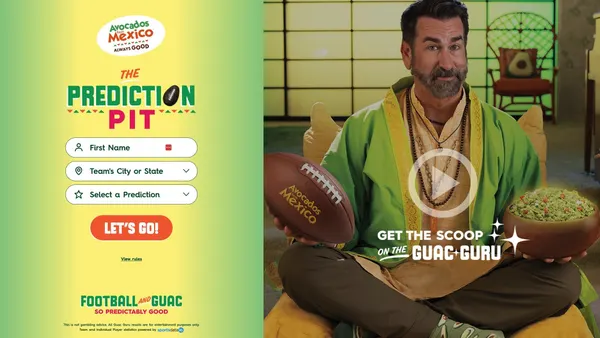Brief:
-
Facebook, the social network that gets 87% of ad sales from its mobile app, on Thursday debuted version 2.1 of its Messenger Platform with an update that will make it easier for brands to engage with consumers. Chatbots are getting a lift with new tools to let marketers add natural-language processing that is better at detecting the context of a customer message – and to hand off customers to a live agent for more personalized support.
-
The new Messenger Platform makes payments easier to set up and more seamless for people to check out. Customers can pay using a one-step process through Messenger webview. Facebook’s Payments on Messenger feature is still being tested and available in the U.S. only.
-
Facebook also added five new kinds of call-to-action buttons that marketers can add to their Page to drive interactions in Messenger. In addition to the “Send Message” button that’s already in Messenger, the app now has Shop Now, Get Support, Get Updates, Play Now and Get Started. These more detailed descriptions let customers know what to expect when they click to interact with a brand, Facebook said.
Insight:
Facebook recognizes that the growth rate of its user base is destined to slow, and priorities are shifting to finding ways to monetize other apps such as Facebook Messenger, WhatsApp and Instagram. The addition of transactional capabilities will be a key part of building on its growing dominance in the advertising market and builds on the recent global roll out of ads for Messenger. The news comes as more brands are finding creative ways to leverage chatbots. Unilever's Simple skin care brand recently introduced a chatbot to help in-store shoppers find the right product.
Facebook’s latest update to its Messenger Platform is very much directed toward mobile marketers who seek more seamless interactions with the social network’s user base that has grown past 2 billion. Chatbot functionality is being improved with Built-In NLP (natural-language processing) that automatically detects meaning and information in the text of messages that a user sends before it gets passed to a bot. The platform can detect seven key traits of any message before hand-off to a bot: hello, bye, thanks, date & time, location, amount of money, phone number, email and a URL. Consumers are more likely to get the right help quickly, rather than spending a frustrating conversation talking to a bot that fails to register the crucial info. Facebook said this functionality is the first step in bringing NLP capabilities to all developers, letting brands scale their experiences on Messenger.
The Handover protocol that makes it easier for a customer to get help from a live agent is being tested. It’s another step toward making chatbots less frustrating for consumers who need a human to handle more complex requests from customer service.
While Payments on Messenger is still being tested, marketers can start providing mobile payment that’s connected with other established payment systems like credit cards. The expanded lineup of call-to-action buttons also is aimed at encouraging engagement between businesses and their customers. Developers also can now receive notifications when their bot has been blocked or policy issues arise.










